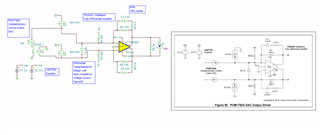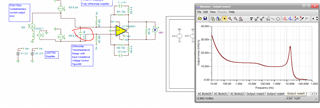Other Parts Discussed in Thread: PCM1794A
Hi, i'am looking at schematics on page 52 of ths4551 datasheet ( ths4551 as I-V stage for PCM1794a DAC) and I can not figure out how high-frequency noise gain is calculated (and the value of capacitor between differenitial inputs). Why it is 17.7 V/V?





